In this article:
Tanning is your skin’s way of protecting itself from sun damage, but it can be a cosmetic problem for many. Your body has the added protection of clothes or footwear but your face remains in direct sun exposure.
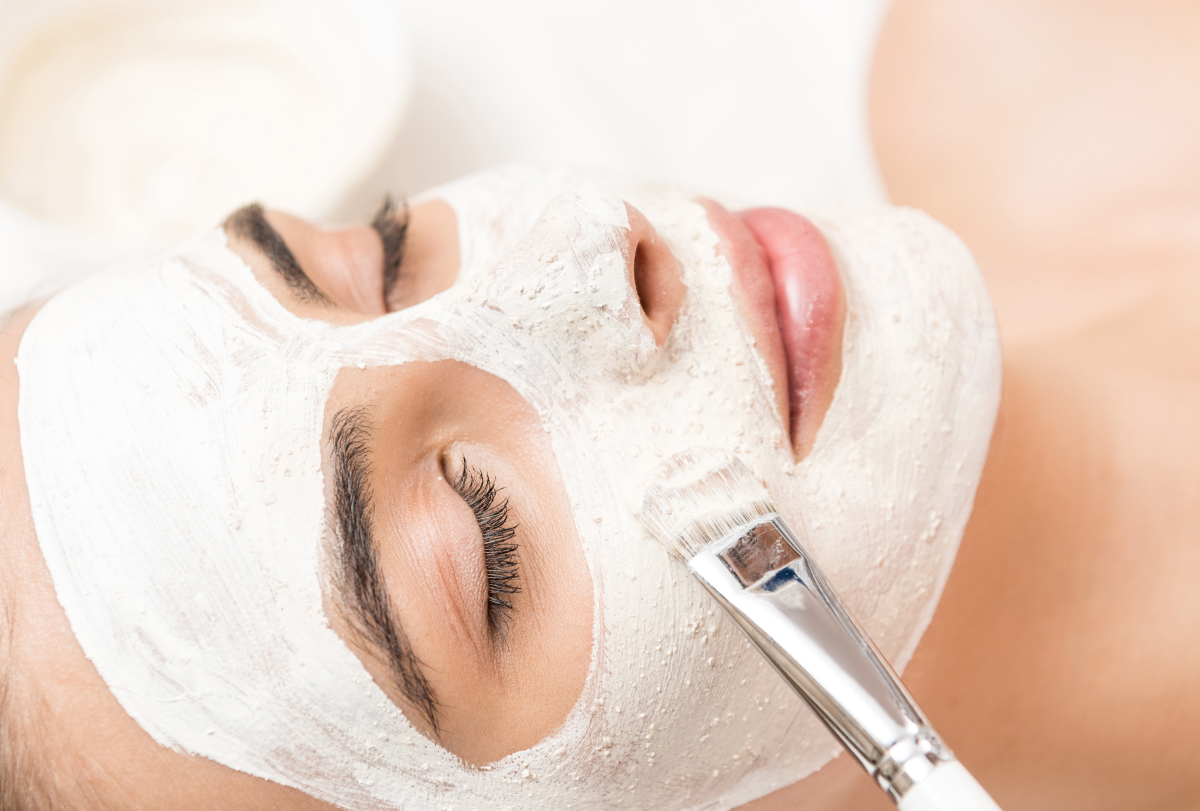
This article will discuss the various ways in which you can prevent and reduce facial tanning
Causes of Skin Tanning
Sunlight contains ultraviolet rays (UV) that can penetrate deep into the skin to destroy its healthy cells down to their very DNA. But your skin has a built-in mechanism to block out this harmful radiation.
When sunlight falls on the skin, it stimulates specialized cells called melanocytes to release a pigment compound called melanin, which absorbs the UV rays at the surface level. This extra melanin, however, makes your exposed skin darker, referred to as tanning.
With the continued depletion of the ozone layer over the years, it has become easier for the sun’s UV rays to breach the earth’s atmosphere, causing more severe skin damage.
Treatment for Tanned Skin
Tanning can be managed with the following treatment options.
Over-the-counter treatments
1. Vitamin C serums
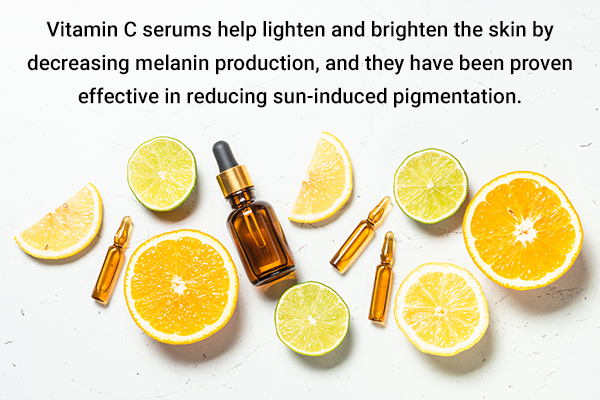
Vitamin C serums help lighten and brighten the skin by decreasing melanin production, and they have been proven effective in reducing sun-induced pigmentation. (1)
2. Use a sunscreen
Sunscreen is a must if you wish to protect your skin from tanning and other forms of sun damage. It forms a protective layer over the skin that blocks out the sun’s UV rays. Since the rays don’t enter the skin, there is no undue release of melanin to cause tanning.
Look for a broad-spectrum sunscreen with an SPF of 30 or higher, and apply it to exposed skin during the day, even when you are indoors as sunlight can enter through the windows.
3. Facial cleansers
Facial cleansers containing alpha and beta hydroxy acids are effective products to combat tanning. Both these acids exhibit several dermatological benefits that not only help reduce tanning but also improve the overall appearance of your skin.
For starters, they are packed with antioxidants that protect your skin from free radicals that are released in your skin via sun exposure. Plus, these acids dissolve the bond between the dead cells accumulated on the surface of the skin to make them shed faster.
The removal of the darkened upper layer of the skin allows fresh healthy skin to rise to the surface, gradually restoring your true complexion.
4. Mulberry extract creams
Mulberry extract creams inhibit the activity of an enzyme called tyrosinase, which plays a crucial role in melanin synthesis. Less melanin leads to skin lightening, which helps fade your tan and other dark spots caused by unprotected sun exposure.
5. Niacinamide
Niacinamide, also known as vitamin B3, is known to reduce the amount of melanin transported to the surface by the melanocytes by more than half. This makes it an effective skin-lightening compound, which can help correct your tan when used regularly. (2) You can find serums, moisturizers, and a whole range of skin care products enriched with this ingredient.
In-office treatments
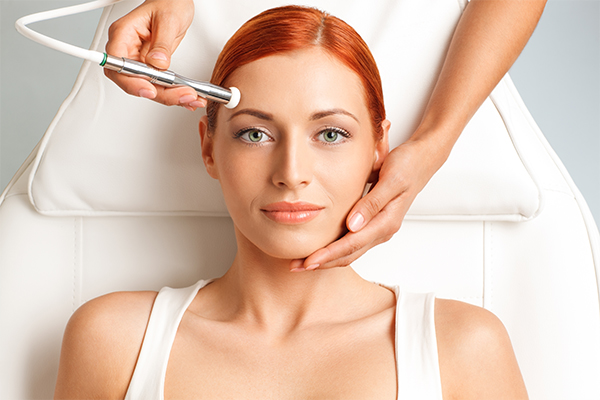
1. Microdermabrasion
Microdermabrasion is a clinical procedure that involves gently removing the dull, damaged topmost layer of the skin using minimally invasive tools. This helps speed up the overall skin regeneration process, resulting in smoother, younger, and even-toned skin. You may have to go for multiple sessions to get rid of the tan completely. (3)
2. Chemical peels
Chemical peels are used to remove the tanned upper layer of skin to reveal fresh new skin from underneath that is naturally brighter and even-toned. This procedure involves applying a chemical agent all over the skin that detaches the dead cells accumulated on the surface so that they shed easily. (4)
3. Laser therapy
Laser therapy involves exposing the tanned skin to a controlled laser beam that destroys the excess melanin in the skin to make it lighter. (5)
Home Remedies to Lighten Skin Tan
You can also turn to home remedies to lighten tanned skin.
Note: Always test a little quantity of these natural remedies on your skin before using them to check for adverse effects or allergies to any of the ingredients.
1. Orange peel powder + lemon + cream
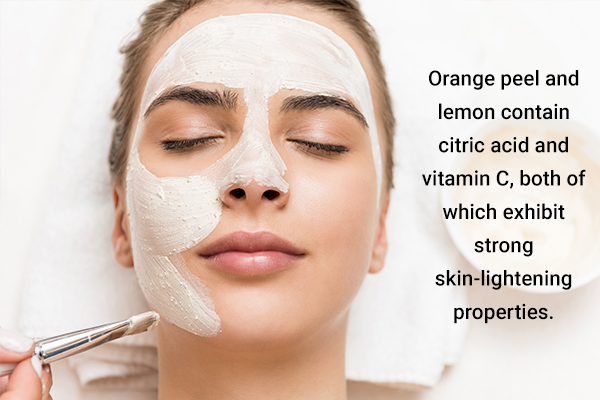
Orange peel and lemon contain citric acid and vitamin C, both of which exhibit strong skin-lightening properties. (6) Vitamin C is also an effective antioxidant, while citric acid works as a gentle skin exfoliant.
Both ingredients also contain polymethoxyflavones (PMF), which are bioactive compounds that curb melanin synthesis. Milk cream is used in this remedy to provide hydration to the skin, acting as a natural moisturizer.
How to use:
- Put 1 tablespoon of milk cream, 1 tablespoon of orange peel powder, and 2–3 drops of lemon juice in a bowl.
- Mix all the ingredients to make a smooth paste.
- Apply the paste to your face and neck.
- Let it dry for 10–15 minutes before washing it off with water.
2. Green tea masks
Green tea is loaded with vital antioxidants that help curb the activity of free radicals and repair the skin damage they cause. Plus, it is rich in beneficial nutrients and vitamins that may help inhibit melanin production to lighten your tan and also nourishing your skin to give it a healthy glow.
How to use:
- Make a small cup of fresh green tea and set it aside to cool.
- Using a cotton ball, apply the freshly brewed tea to your tanned skin.
- Wait for 10 minutes before rinsing it off with water.
3. Licorice powder and kaolin clay masks
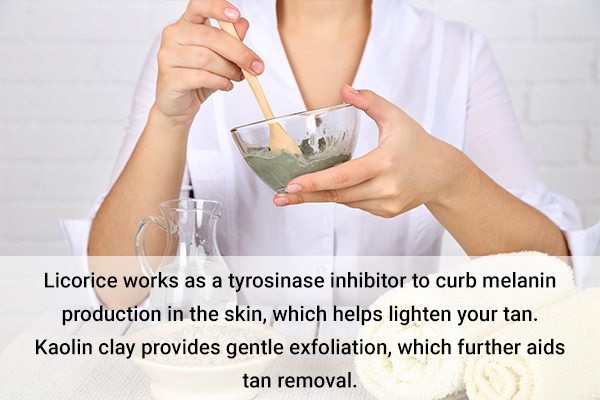
Licorice works as a tyrosinase inhibitor to curb melanin production in the skin, which helps lighten your tan. Plus, it possesses antioxidant and anti-inflammatory effects that aid in healing the sun-induced skin damage. (7)
Kaolin clay provides gentle exfoliation, which further aids tan removal.
How to use:
- Combine ½ teaspoon of licorice powder and ¾ teaspoon of kaolin clay in a bowl.
- Mix in a little curd or milk cream to make a medium-thick paste.
- Wash your face, let it dry, and apply this paste to your tanned skin.
- Wait for 20 minutes before rinsing it off.
4. Raw milk
Raw milk is deeply hydrating and replete with alpha hydroxy acids, calcium, and powerful antioxidants, all of which make it an excellent remedy for reversing tanning, preventing sun damage, and moisturizing the skin.
How to use:
- Soak a clean cotton ball in raw milk and apply it to your face or just the tanned area.
- Let it dry for 20–30 minutes, and then rinse your face with cold water.
5. Potato juice
Potato juice has bleaching properties that help reduce facial tanning and restore your natural skin tone. With frequent use, this remedy can visibly brighten your complexion and even improve your skin texture.
How to use:
- Wash 1–2 unpeeled potatoes and cut them into smaller chunks.
- Add them to a food processor with some water and blend for 2–3 minutes.
- Strain the paste to separate the juice.
- Apply the juice to the tanned areas of your face.
- Let it dry for about 15 minutes and then wash your face with cold water.
Lifestyle Changes to Manage Tanned Skin
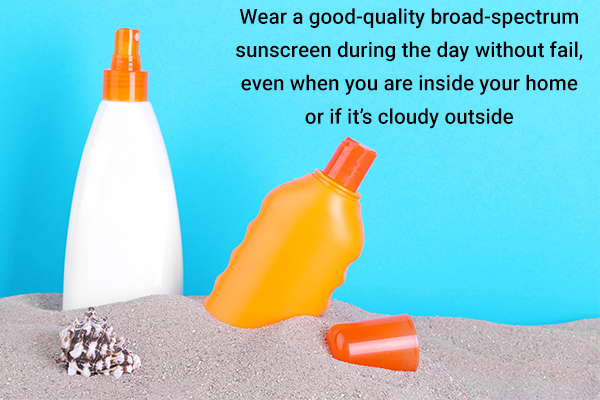
If you tan easily, it is recommended to develop the following habits to take care of your skin:
1. Use a good-quality sunscreen
Wear a good-quality broad-spectrum sunscreen during the day without fail, even when you are inside your home or if it’s cloudy outside. The UVA and UVB rays can easily penetrate the windows of your home or dense cloud cover to reach you; it’s best to be safe than sorry.
If you are stepping out, apply sunblock at least 20–30 minutes beforehand to give the product time to properly seep into your skin. Reapply it every 2 hours for continued sun protection.
2. Maintain adequate fluid intake
Meet your recommended fluid intake by drinking at least 7–8 glasses of water a day. Doing so hydrates your skin from the inside, strengthening the skin barrier and warding off solar damage. Dry skin tends to tan more easily.
3. Exfoliate your face
Exfoliate your face 3 times a week to remove the layer of dull, damaged, tanned skin from the surface, which is inadvertently replaced by newly formed skin from underneath. This skin resurfacing helps fade the tan faster, giving you a brighter and even-toned complexion.
You can either use chemical exfoliating agents such as AHAs, BHAs, and glycolic acid or natural DIY scrubs that use natural ingredients such as oatmeal. Consult your dermatologist to help you make the best choice for your skin type and condition.
Preventive Tips
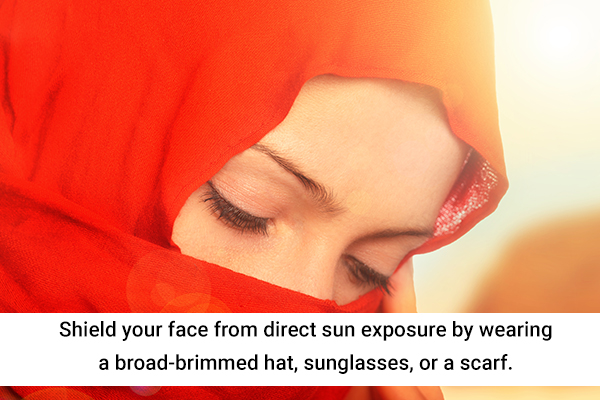
- Limit sun exposure. Try to remain indoors when the sun is at its peak – between 10 a.m. and 4 p.m. If you happen to be outside during these hours, seek shade or carry an umbrella.
- Cover your face. Shield your face from direct sun exposure by wearing a broad-brimmed hat, sunglasses, or a scarf.
When to See a Doctor
You should see your doctor if your suntan hasn’t improved after 2 weeks of using the recommended over-the-counter treatments.
General Queries
Is facial tanning a sign of skin damage?
Yes, tanning is a result of unprotected exposure to the sun’s UV radiation. It penetrates deep into the skin to destroy healthy cells and even cause DNA damage, which can lead to skin cancer. The idea that a tan protects your face from sunburn or other skin harm is a myth.
Is papaya-honey a good remedy for removing tan from the face?
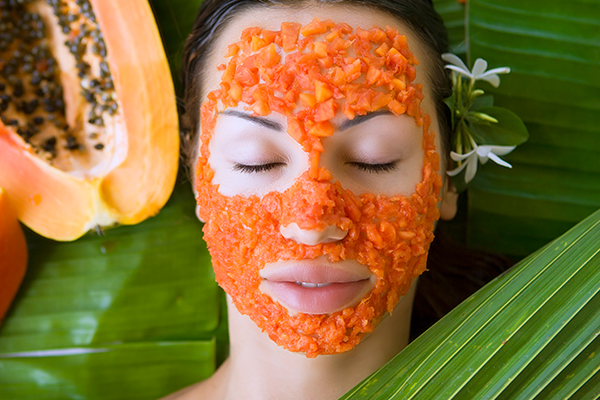
Papaya is a popular home remedy for removing face tan contains papain enzyme, an enzyme known to lighten skin. Honey helps to keep skin supple.
How to use:
- Mash 4–5 ripe papaya cubes into a paste and add 1 teaspoon of honey to it.
- Mix them well to make a lump-free paste, and apply it to your tanned skin.
- Let it dry for 20–30 minutes, and then wash it off with water.
Final Word
The above-listed home remedies employ the skin-lightening effects of completely natural ingredients to fade your tan without irritating the sensitive facial skin. Don’t forget to patch test them before using to make sure you are not allergic to any of the ingredients used. If you experience any burning or stinging sensation, do not use the remedy.
It is also important to remember that none of these remedies will eliminate the tan with a single use. You have to use them consistently for several days to see improvement. Skin healing is a gradual process, and you have to be patient and committed to achieve the desired results. Plus, it is recommended to use them as part of a proper skin care routine that you must adhere to religiously.
- Was this article helpful?
- YES, THANKS!NOT REALLY


